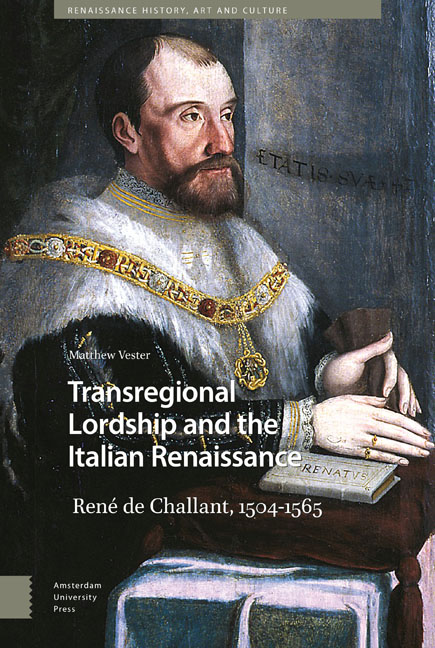Book contents
- Frontmatter
- Contents
- Maps and Tables
- Abbreviations
- Acknowledgments
- 1 On the edge of the Italian Renaissance
- 2 René's early career to 1536
- 3 René's growing influence during the war years, 1536-1553
- 4 René and Duke Emanuel Filibert
- 5 Kinship and noble life
- 6 The Challant political networks
- 7 Finance and brokerage
- 8 Lordship
- 9 The embodiment of spatial politics
- About the author
- Index
1 - On the edge of the Italian Renaissance
Published online by Cambridge University Press: 21 November 2020
- Frontmatter
- Contents
- Maps and Tables
- Abbreviations
- Acknowledgments
- 1 On the edge of the Italian Renaissance
- 2 René's early career to 1536
- 3 René's growing influence during the war years, 1536-1553
- 4 René and Duke Emanuel Filibert
- 5 Kinship and noble life
- 6 The Challant political networks
- 7 Finance and brokerage
- 8 Lordship
- 9 The embodiment of spatial politics
- About the author
- Index
Summary
Abstract
This chapter situates René de Challant on the edge of Renaissance historiography in several ways. The geographic reach of his fiefs and political activities spanned from northwestern Italy across the Alps into the borderlands between France and the Empire. His service to the House of Savoy raises questions about the boundaries of scholarly work on the Italian Renaissance. His activities as a feudal lord with pretensions of sovereign status help us to reevaluate the relationship between the historiography on the European nobility and studies of Italian Renaissance elites. Biography as a genre of history is perched between contextual narrative description and comparative analysis. Recent work on the spatial dimensions of early modern history draw our attention to this material dimension of René's experiences.
Key words: Italian Renaissance, historiography, nobility, spatial history
In 1559, René de Challant seemed to be at the height of his powers. The un-questioned leader of the most powerful magnate family in the Valle d’Aosta, he held fiefs not only throughout the valley, but also in the transalpine Sabaudian lands (in what is, today, western Switzerland), in the duchy of Lorraine, and in the marquisate of Monferrato. As Marshal of Savoie, he was the chief military commander for the House of Savoy and swore allegiance to that Duke for most of his lands. The Challant family had appeared in the Valle d’Aosta by the twelfth century (when the valley accepted Sabaudian overlordship) and began acquiring fiefs and offices. François de Challant received the comital title in the fifteenth century but had no direct male heirs, so the head of another branch of the family, Jacques de Challant-Aymavilles, acquired his titles. Jacques's great-grandson René reaped the benefits, also inheriting from his mother the lordship of Valangin and the barony of Beaufremont north of the Alps. He was a transregional noble with strong service ties to a dynasty whose states themselves spanned the Alps, embodying in his person and lands an Italian Renaissance that was itself spatially dispersed.
The force of René's influence might be one reason why the Duke of Savoy assigned him to a command that was naturally exercised from Savoie, across the Alps from his power center in the valley.
- Type
- Chapter
- Information
- Transregional Lordship and the Italian RenaissanceRené de Challant, 1504–1565, pp. 13 - 52Publisher: Amsterdam University PressPrint publication year: 2020



